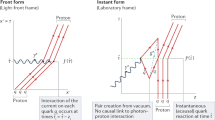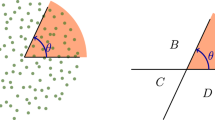Abstract
IT is not clear why the subject of statistics should throw any light on this problem, as Dr. G. W. Scott Blair suggests. There are two possible logical foundations for the use of statistics in physics: either, in the framework of a fully deterministic theory, wherein statistics may be used for the discussion of problems of such complexity that the detailed application of the supposedly known physical laws is impracticable; or within a non-deterministic theory, where the most basic physical laws may be concerned with the statement of probabilities.
This is a preview of subscription content, access via your institution
Access options
Subscribe to this journal
Receive 51 print issues and online access
$199.00 per year
only $3.90 per issue
Buy this article
- Purchase on Springer Link
- Instant access to full article PDF
Prices may be subject to local taxes which are calculated during checkout
Similar content being viewed by others
Author information
Authors and Affiliations
Rights and permissions
About this article
Cite this article
BONDI, H., GOLD, T. Relativity and Indeterminacy. Nature 170, 582–583 (1952). https://doi.org/10.1038/170582c0
Issue Date:
DOI: https://doi.org/10.1038/170582c0
Comments
By submitting a comment you agree to abide by our Terms and Community Guidelines. If you find something abusive or that does not comply with our terms or guidelines please flag it as inappropriate.



